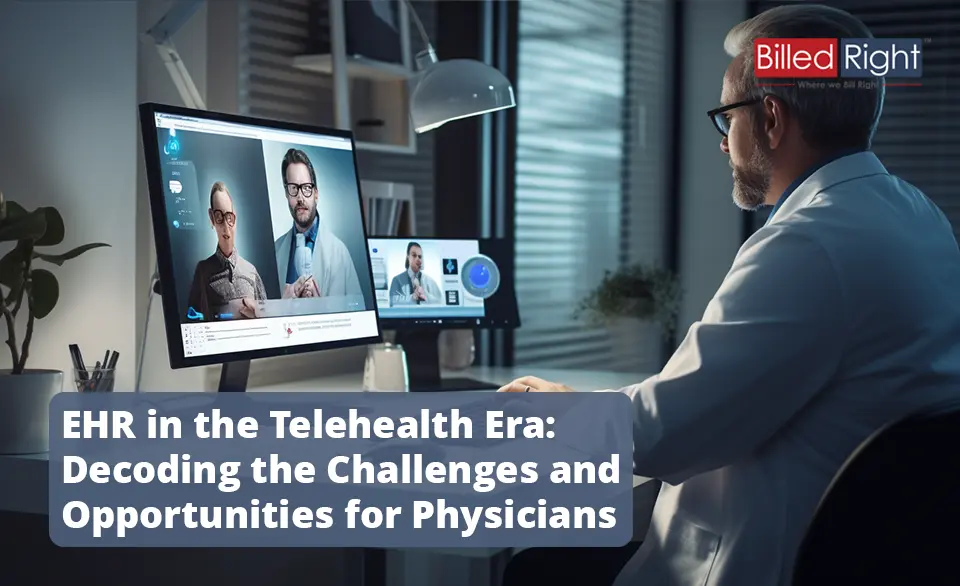EHR in the Telehealth Era: Decoding the Challenges and Opportunities for Physicians

In the ever-evolving landscape of healthcare, the surge in telemedicine, accelerated by the post-COVID era, has prompted a critical examination of its impact on physicians. This study delves into the association between telemedicine expansion and the electronic health record (EHR) burden, unraveling key insights that illuminate the challenges faced by healthcare professionals. As we navigate this transformative phase, understanding the implications outlined in this research is very important for health systems striving to support their physicians effectively.
Key Findings
This study published in JAMA, conducted among 1,052 ambulatory care physicians at the University of California San Francisco Health, unveils important insights into the transformative impact of telemedicine on physician workflows. As we dissect the key findings, it becomes evident that the surge in telemedicine has significantly influenced EHR time, documentation practices, and patient messaging dynamics among healthcare professionals. The scale and depth of this research offer a comprehensive understanding of the challenges faced by physicians in adapting to the landscape of healthcare delivery in 2023 and beyond.
Increased EHR Time:
- Physicians experienced a notable increase in EHR time during patient service hours and outside of scheduled hours.
- During patient service hours, EHR time rose from 4.53 to 5.46 hours per 8 scheduled hours, highlighting a substantial shift.
- Outside of patient service hours, there was a significant increase from 4.29 to 5.34 hours.
Documentation Surge:
- Time spent documenting during and outside of patient service hours saw a remarkable surge.
- Physicians documented for an average of 6.35 hours before the pandemic, which increased significantly to 8.18 hours after its onset.
Patient Messaging Dynamics:
- Electronic messages sent and received by physicians witnessed a substantial increase.
- Mean weekly messages received from patients more than doubled, rising from 16.76 to 30.33.
- Messages sent to patients also increased significantly, from 13.82 to 29.83.
Implications
Significance for Health Systems:
- Insights from the study carry crucial implications for the strategic planning of health systems.
- Understanding the impact of telemedicine on physician workflows becomes instrumental in shaping efficient healthcare delivery.
Adjusting Productivity Expectations:
- Urgent call to health systems to reassess and adapt productivity expectations for physicians.
- Recognition of the increased EHR burden as a result of telemedicine, urging a reevaluation of workload management.
Strategies to Alleviate EHR Burden:
- Emphasis on the vital need for health systems to devise and implement strategies to alleviate the growing EHR documentation burden.
- Proactive measures, such as adopting supportive technologies or adapting workflows, are crucial for sustaining physician well-being and optimizing healthcare services.
Conclusion
The study advises healthcare providers to embrace supportive technology, like virtual scribes, and consider workflow adaptations for a seamless integration of telemedicine. Exploring solutions such as virtual waiting rooms is also recommended to enhance operational efficiency amid the rise in electronic health record (EHR) documentation tasks.
The escalating demands on physician time, as highlighted in this study, have also spurred major technology players such as Amazon, Google, and Microsoft to explore innovative solutions, incorporating AI-driven virtual scribes. These advancements aim to streamline documentation processes, offering a potential remedy to alleviate the burden on healthcare professionals.
The surge in telemedicine, while offering unprecedented opportunities, requires a m0tivated approach from health systems to address the challenges outlined in this study.
Striking a balance between technological advancements, such as AI-driven solutions, and tailored strategies is important for ensuring optimal healthcare delivery, physician well-being, and sustained patient care excellence in this dynamic era.






